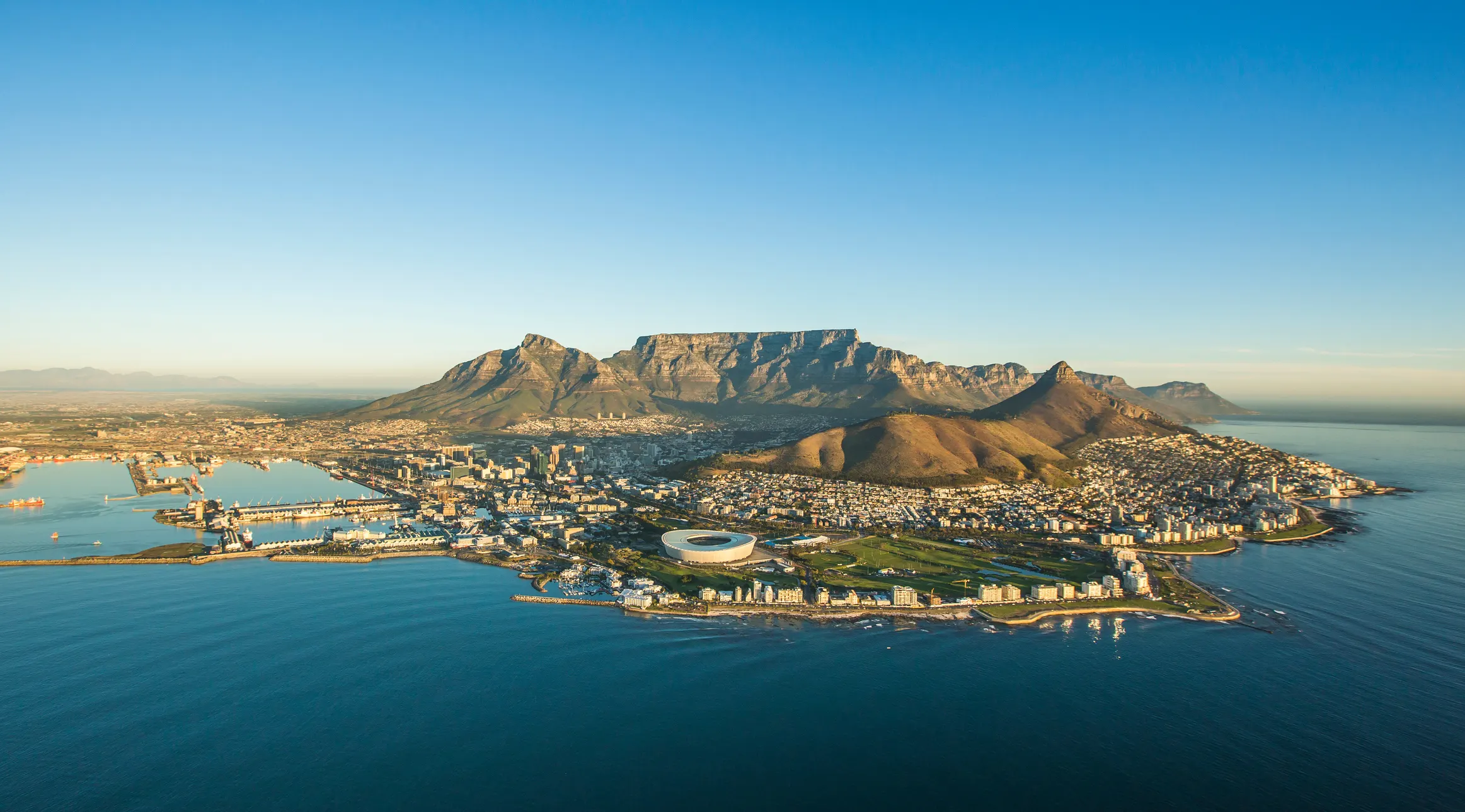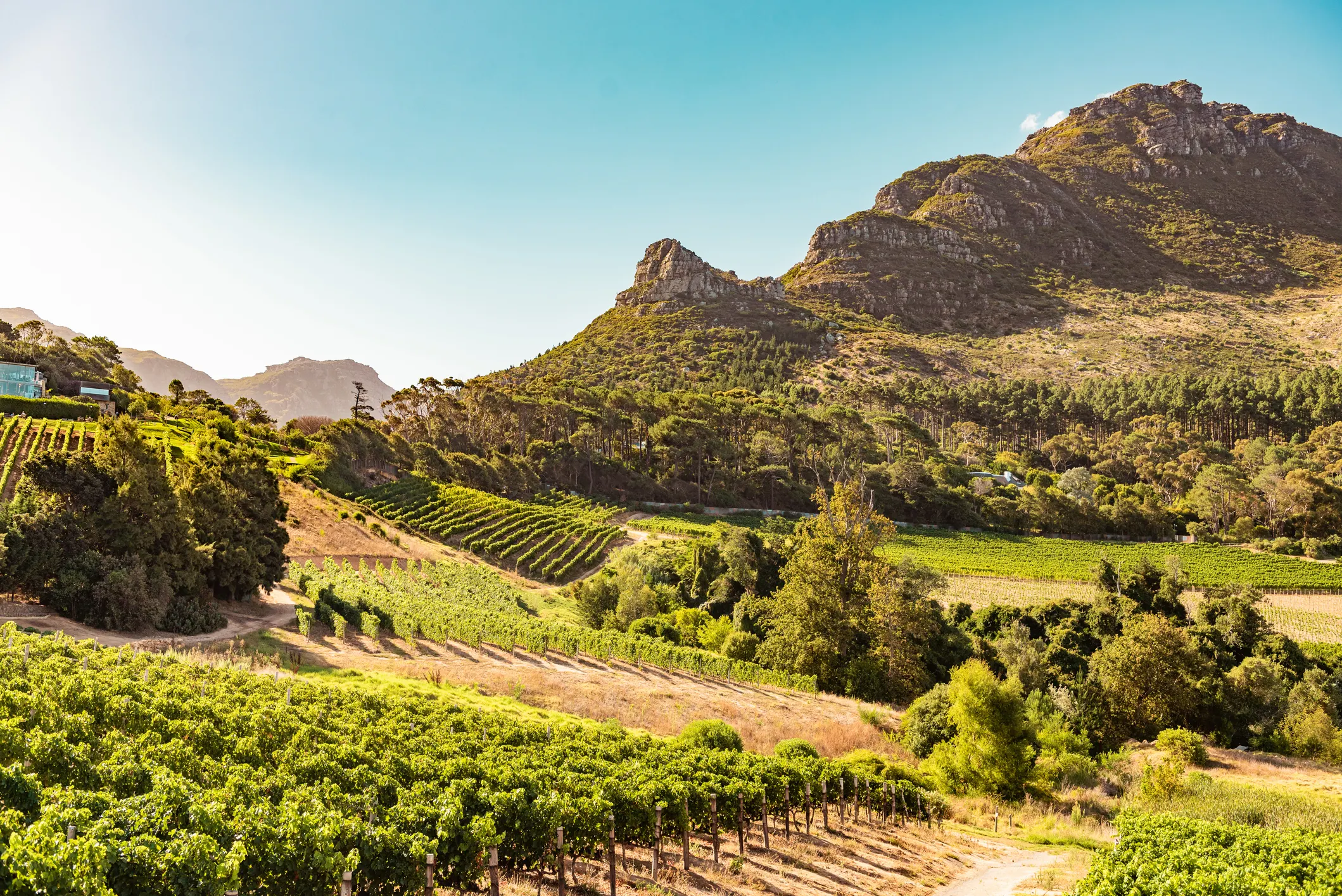A terracotta-colored trail hugs the edge of South Africa’s Cape Peninsula. Red aloe flowers rise from a carpet of muted-green flora on slopes tumbling down to the turquoise ocean far below.
I’m so captivated by the sight of mountains far across False Bay, that I nearly overlook another distant giant: a breaching whale. The massive mammal—most likely a southern right whale—sprayed and then flashed its tail a few times, before vanishing under the waters of the bay.
On this autumnal afternoon, the temperatures are pleasant and the ocean appears calm. However, this area has long been known for its shipwrecks, and legends of ghost ships like the Flying Dutchman.
In the 15th century, the nearby Cape of Good Hope was notorious for dishing out an especially volatile passage. So unforgiving was the combination of unpredictable weather and rugged coastline, that Portuguese sailor Bartolomeu Dias dubbed the section of coast the "Cape of Storms."
Later, in an early example of speculative rebranding, the Portuguese king of the time renamed it the "Cape of Good Hope." This new moniker reflected the optimism brought about by the establishment of a new sea route. Today, the Cape of Good Hope is also recognized as being the most southwesterly point of the African continent.
Today’s explorers come to South Africa’s Western Cape in pursuit of extraordinary flora and fauna, high-quality wine, and to delve into the country’s complicated history. I’ve been to South Africa twice. During this trip, my husband, Shawn, and I, along with his parents, spent two weeks in the Cape Town area.
How to Move Out of the U.S.
How to Move Out of the U.S.
In all sorts of beautiful, welcoming, culturally rich, saner places around the world, you can live well from $2,000 a month (all in, housing included). Sign up for our free daily IL Postcards e-letter and we’ll immediately send you a free report on the WORLD’S # 1 RETIREMENT HAVEN— plus 9 more spots you should have on your radar. Each day, you’ll earn about the best places to move to, retire, travel, buy real estate, and enjoy a good life for less, overseas.

By submitting your email address, you will receive a free subscription to IL Postcards and special offers from International Living and our affiliates. You can unsubscribe at any time, and we encourage you to read more about our Privacy Policy.
Dynamic and Multicultural Cape Town

Cape Town is South Africa’s second-largest city and has a population of more than 3.5 million people. The city boasts a Mediterranean climate, beaches, and some of the world’s greatest biodiversity. The Cape Town area also offers aquariums, world-class surfing spots, and wine tastings. One of the main draws, though, is the opportunity to see exotic creatures in the wild, including baboons, whales, and penguins.
The city’s skyline is dominated by magnificent Table Mountain, which towers 3,558 feet above sea level. Its exceptionally flat top extends for roughly two miles and is flanked by pointed peaks. Given the views it affords, Table Mountain is an exceedingly popular tourist attraction. You can ascend it via a five-minute cable car ride, or on foot. When we attempted to visit the summit at midday, the line for the cable car was so long that we reluctantly decided to forego the trip. The next time we visit, we hope to hike to the top. (For details, see: Tablemountain.net)
The scenic Kirstenbosch Botanical Gardens are located at the foot of Table Mountain. Its gardens feature a Tree Canopy Walkway, Fynbos Garden (fynbos is a type of mixed shrubland vegetation that is unique to this part of the world), Sculpture Garden, and much more. You can even enjoy high tea and homemade scones on the premises. Kirstenbosch, as part of the greater Cape Floral Region, is a UNESCO World Heritage Site. Tickets cost about $4.30. (See: Sanbi.org/gardens/kirstenbosch)
Bo-Kaap, Cape Town’s Malay district, is filled with small houses that are painted in sherbet-colored hues. This makes it especially popular with photographers. The area was previously a township, and was established by a Dutch settler who had homes built in order to serve as rental properties for slaves shipped in from present-day Indonesia and Malaysia.
After emancipation in 1834, the freed residents transformed the homes’ exterior facades from plain white to their current rainbow hues. If you’d like to buy some culinary curiosities while you’re in the neighborhood, stop into the Atlas Trading Company. This family-owned shop sells a bounty of spices from around the world, in vibrant colors that’ll remind you of the Bo-Kaap architecture. (See: Atlastradingcompany.co.za)
About two-and-a-half miles from Bo-Kaap is the Victoria & Alfred (V&A) Waterfront, situated on Table Bay. This harbor is both functional and recreational, and features shops, restaurants, and museums. The waterfront is also the launching point for boat excursions and other tours. (See: Waterfront.co.za)
The ferry out to Robben Island, a UNESCO World Heritage Site, departs from the V&A Waterfront. Robben Island was in use from the 17th century until 1996. During the cruel period of apartheid, the South African government notoriously transformed Robben Island into a maximum-security prison.
Thousands of political prisoners were incarcerated here, including Nobel Peace Prize winner Nelson Mandela. You can visit the island and see the tiny cell where Mandela spent 18 of his 27 years in prison before becoming South Africa’s president in 1994. When we visited, a former political prisoner even conducted a portion of our tour.
Note that you can only visit the island on a guided tour and that tickets can sell out quickly. Tickets cost about $32.00. See: Robben-island.org.za
Understanding South Africa’s Townships
The legacies of colonialism and apartheid continue to impact life in South Africa. During the apartheid era (1948-1994), townships were reserved for the country’s non-white population. According to the World Bank, approximately half of the country’s urban residents still live in townships or informal settlements.
Cape Town has several townships. Khayelitsha, which is located on the outskirts of the city, is one of the largest townships in South Africa. Its residents are mostly Black. (In South Africa, the terms Black, White, Indian, and Colored were used during apartheid. "Colored" sounds pejorative, but it is still used—even in the country’s census—to describe people with mixed-race ancestry. Some South Africans I spoke to still self-identify as being Colored.)
Numerous organizations offer visits to Cape Town’s townships. We were curious to learn about life there, but we didn’t want to be intrusive. We ended up visiting Khayelitsha with Nomvuyo’s Tours.
We visited an animal clinic, a traditional arts and crafts center, and a neighborhood program aiming to dissuade children from gang involvement. Before the tour, my husband’s father asked if it was okay to make a donation of art supplies. He bought them in advance, and the organization in Khayelitsha was happy to receive them. (See: Nomvuyos-tours.co.za)
Visiting the Winelands of the Western Cape

South Africa produces some exceptional wine, and the majority of the country’s vineyards are located in the Western Cape region. Jagged mountains, verdant valleys, and pretty Cape Dutch architecture (think snow-white buildings crowned with thatched roofs and curved gables) characterize the area, giving it an appearance that simply doesn’t exist elsewhere. It’s Africa, but not how your mind’s eye pictured it.
We sampled wine at a few places in the Western Cape; these were some of our favorite spots:
Groot Constantia Wine Estate: Located in southern Cape Town and established in 1685, this elegant estate abounds in history. Centuries ago, European royals snapped up its wine at auction. The wine was even mentioned in Jane Austen’s 1811 novel, Sense and Sensibility. (See: Grootconstantia.co.za)
Spier Wine Farm: Wine has been produced in the Stellenbosch area since the 17th century, when Dutch settlers first colonized the area. You can participate in a wine tasting here (my favorite was a crisp sauvignon blanc) or buy picnic offerings and enjoy them on the wine farm’s attractive grounds. Spier also has several restaurants; we dined here twice. (See: Spier.co.za)
Vergenoegd Löw Wine Estate: Also located in Stellenbosch, Vergenoegd is best known for its duck parades during which hundreds of pest-eating ducks march by. By devouring snails and insects that would otherwise feast on the vines, these feathery assistants help minimize the use of pesticides on this inviting wine farm. (See: Vergenoegd.co.za)
Haute Cabrière Winery: The Haute Cabrière Winery is situated on the edge of the town of Franschoek. Here, we enjoyed a picnic and a sparkling wine made from pinot noir grapes. Franschoek was established by French Huguenots in the 17th century and is surrounded by dramatic mountains. It’s marketed as the Cape’s culinary capital. We visited Franschoek’s Huguenot Memorial after our picnic. (See: Cabriere.co.za)
Tips for Exploring the Western Cape
The Cape Town area makes up a small part of the Western Cape province. Here are some practical details about this extraordinary part of South Africa.
Visa: American tourists do not require a visa for stays of up to 90 days.
Currency: South Africa uses the South African Rand (ZAR). You’ll find that businesses usually accept credit cards. However, it’s always a good idea to have cash on hand. For meals and lodging for a couple, expect to pay about $245 per day.
Language: Given South Africa’s diversity, there are 11 different official languages. In the Cape Town area, English, Xhosa, and Afrikaans are the most widely spoken.
Driving: We rented a vehicle, and found the roads in the Cape Town area to be relatively good. Note that you drive on the left-hand side of the road, and that driving can be intense. We tried to avoid nighttime driving.
Accommodation: We used the Stellenbosch area as our home base from which to do day trips. We stayed in a two-bedroom cottage on the grounds of a gated wine farm and olive grove. The owners were selling the property, but there are many more vacation rentals in the area. Roomsforafrica.com is a good local site to check out.
How to Move Out of the U.S.
How to Move Out of the U.S.
In all sorts of beautiful, welcoming, culturally rich, saner places around the world, you can live well from $2,000 a month (all in, housing included). Sign up for our free daily IL Postcards e-letter and we’ll immediately send you a free report on the WORLD’S # 1 RETIREMENT HAVEN— plus 9 more spots you should have on your radar. Each day, you’ll earn about the best places to move to, retire, travel, buy real estate, and enjoy a good life for less, overseas.

By submitting your email address, you will receive a free subscription to IL Postcards and special offers from International Living and our affiliates. You can unsubscribe at any time, and we encourage you to read more about our Privacy Policy.
